new posts in all blogs
Viewing: Blog Posts Tagged with: Identity, Most Recent at Top [Help]
Results 26 - 39 of 39
How to use this Page
You are viewing the most recent posts tagged with the words: Identity in the JacketFlap blog reader. What is a tag? Think of a tag as a keyword or category label. Tags can both help you find posts on JacketFlap.com as well as provide an easy way for you to "remember" and classify posts for later recall. Try adding a tag yourself by clicking "Add a tag" below a post's header. Scroll down through the list of Recent Posts in the left column and click on a post title that sounds interesting. You can view all posts from a specific blog by clicking the Blog name in the right column, or you can click a 'More Posts from this Blog' link in any individual post.
I still have Bosses, Leaders, and Power in my mind. How could I avoid thinking about it? Every day that I put CNN on for the latest news, I see the kind of Leadership, the kind of Boss, and the Use of Power that the Lybian leader, Ghadafi offers his people. This also effects the rest of the world actually. Just go and fill up your tank at any USA service station and you’ll see how his every move impacts all of us. Ghadafi is a tyrant, for sure, but what I want to know is how there are so many Lybians who support him, who fly his plane and tanks and kill their fellow citizens. Have they been so crippled by having their own ability to think taken away from them for many years that when they are finally given a chance to exert themselves, they are unable to do so? Is this the same kind of brainwashing that we had seen among Hitler’s “judend namely the German children, who cheered for him blindly? This is all very scary stuff, as far as I’m concerned.
But I’m also worried about the leadership of the countries in the rest of the world that stand by lamely and don’t use the power in their hands to stop the Hitlers and Ghadafis and Mubaraks and … and … and …
Is this also a problem on a much smaller scale? For example, how many parents dominate their children, how many husbands and wives dominate their spouses, how many siblings dominate one another, how many bosses dominate their employees to the point that they are unable to express their own free will? Not a small number, I would imagine. I think leadership qualities can be identified in childern as early a nursery school. Perhaps we should find a way for those who are being bossed around to learn early on how to deal with those who rule over other in negative ways.
Filed under:
Culture,
Dominance,
Identity,
Personalities Tagged:
cultural change,
Dominance,
Personalities,
relationships 







.jpeg?picon=3655)
By: Read Now Sleep Later,
on 3/8/2011
Blog:
Read Now Sleep Later
(
Login to Add to MyJacketFlap)
JacketFlap tags:
louis sachar,
growing up,
3 stars,
identity,
guest post,
delacorte books for young readers,
the cardturner,
kimberlybuggie,
Realistic,
Add a tag
ISBN 10/13: 0385736622 / 9780385736626
I turn you over once again to KimberlyBuggie, who is saving my life, one review at a time. If you want the blurb, click on the cover image above.
Kimberly's review: Growing up, I was a big fan of Louis Sachar. The Boy Who Lost His Face, There's A Boy In The Girl's Bathroom and all the stories from Wayside School.
Years later, (many, but I won't say how many), I'm happy to find that Mr. Sachar has still kept his sense of humor, good writing and sharp observations.
I'm not going to lie. The Cardturner does have A LOT of information about the game of bridge, which some may find boring. I don't know how to play bridge, nor do I have any interest in learning. And for all that information, it really is just a vehicle used to move the story. Sachar does a fun trick where he'll show you a whale, you'll have to read it to find out why, and what follows is a particularly long scene about bridge. At the end, he'll summarize it for you. (Thank you for realizing that I do not necessarily want to learn how to play bridge.)
But the story is about a boy and his search for his own identity. About his Uncle, a loner and a mysterious figure who may have more in common with him than he thought.
The story is filled with wonderful characters. (Toni, Gloria, and of course Lester) And while it's not a page turner, a thriller, a stay up late all night--it is a charming story about finding some friends, interests and yourself, in unexpected places.

By: Kirsty,
on 2/17/2011
Blog:
OUPblog
(
Login to Add to MyJacketFlap)
JacketFlap tags:
Law,
Technology,
Current Events,
Media,
identity,
surveillance,
WikiLeaks,
spying,
lady gaga,
*Featured,
news of the world,
phone hacking,
phone tapping,
CCTV,
id cards,
one nation under surveillance,
simon chesterman,
chesterman,
Add a tag
By Simon Chesterman
The ongoing police investigation into phone-hacking in Britain by the tabloid News of the World has revealed the widespread use of surveillance techniques by private actors, with predictable outrage expressed at the violations of privacy. Yet the recent inquiries only began in earnest after a major story in the New York Times.
This is the paradox of today’s media: investigative journalism is often key to revealing abuses of surveillance powers, yet the commercial reality of today’s market drives unscrupulous journalists themselves towards ever more dubious methods.
That market has been radically altered by the “new media”, with WikiLeaks as its poster-child — ably exploiting the Internet’s capacity for widespread dissemination of data, but at the expense of credible efforts at analysis or minimizing the potential harm to named individuals. It is “journalism” by quantity rather than quality.
These two trends — muck-raking and unfiltered dissemination — become all the more serious when linked to the extraordinary tools of surveillance available to government and, increasingly, private actors.
The spread of surveillance powers through Britain has long puzzled outside observers. On the one hand, Britain is a rare example of a country that developed a comprehensive identity card regime during the Second World War and then dismantled it after the conclusion of hostilities — apparently to the dismay of many in law enforcement circles. Later in the century, however, the absence of constitutional protections of rights, a general belief in the benevolence of government, and episodes like the 1993 James Bulger murder encouraged the growth of a sophisticated surveillance state.
Britain now enjoys the highest concentration of CCTV cameras in the world, manages the London Congestion Charge by recording details of every car entering and leaving the capital, and stores DNA samples from an ever growing proportion of the population.
In the 2010 general election, Britain’s Conservative Party campaigned on a platform of scrapping plans for an identity card that would have been linked to a National Identity Register. Interestingly, the arguments that resonated with the public had less to do with privacy concerns than the expense involved, doubts about government competence to manage the data, and a general wariness that the whole enterprise looked a little too “European”.
Does this mean that Britons do not care about privacy? Certainly not. But as in many other countries it is hard to reconcile the apparent sincerity of individuals claiming to be concerned about their privacy with the nonchalant behaviour of those same individuals in revealing personal information voluntarily or engaging in activities where there is manifestly no reasonable expectation to privacy.
This is not limited to teenagers. The current head of MI6, Sir John Sawers, was embarrassed by photos that his wife posted on Facebook in 2009 revealing the location of their London flat and the whereabouts of their three adult children. Last October his daughter uploaded a suggestive photograph of herself holding a golden Kalashnikov — quickly cut and pasted from Facebook to the Mirror.
There is, however, a generational element to attit
 Recently on NPR's Science Friday there was a piece on how our many online social media opportunities raise a question about the multiple identities we all inhabit and how we present ourselves to the world. I think I'm what you might call a "casual user" of this technology, but even I am splintered across this blog and my static website, two accounts on facebook, LinkedIn and twitter (as yet unused), three email addresses (personal,"writer" and teacher), about a dozen listservs (three different usernames) and a charter school identity. And who knows how many sites (Evite, Groupon, amazon.com to name a few) think they know who I am and what kind of cookies I like?
Recently on NPR's Science Friday there was a piece on how our many online social media opportunities raise a question about the multiple identities we all inhabit and how we present ourselves to the world. I think I'm what you might call a "casual user" of this technology, but even I am splintered across this blog and my static website, two accounts on facebook, LinkedIn and twitter (as yet unused), three email addresses (personal,"writer" and teacher), about a dozen listservs (three different usernames) and a charter school identity. And who knows how many sites (Evite, Groupon, amazon.com to name a few) think they know who I am and what kind of cookies I like?
But long ago--ten whole years and then some--before any of this, when most of us were pretty cutting-edge in having any email address at all, I considered redefining my poet self by writing under a pen name instead of under the same old scary-looking, mispronounceable Mordhorst (which, by the way, is spelled just the way it sounds and pronounced just the way it's spelled, so please don't say MordhUrst). I came back to poetry almost the minute my daughter was born (talk about identity crisis: "You are now Mommy"), and while taking workshops at the wonderful Writers' Center here in Bethesda, I started signing my drafts "Heidi Zingerline."
The new surname choice was totally legit and even served a historical purpose, I thought. My mother's maiden name is Zingerline and with only one set of cousins on her side of the family, both girls, the name is in danger of disappearing from use. Plus, how perfect is that for a poet--zinger-line? Get it?
Then I realized that there was no way to communicate all that information in a byline, and that anyone who didn't know that Zingerline was a real name, mine to use by rights, might see it as a cheesy joke. I briefly considered "Heidi Zingerline Mordhorst," but it's not like "Heidi Mordhorst" needs any further distinguishing feature--maybe, if I had been Lisa Smith my whole life, Lisa Zingerline Smith might have made some sense.
But what really changed my mind was a poem written by a fellow workshopper and instant friend from the Writers' Center. He arrived at a critique group meeting one week in 2000 with this to share, and now the only vestige of my flirtation with Zingerline is in my writer email address, [email protected]. Thank you, Lawrence, for your faith in Mordhorst.
Nom de plume
For "Heidi Zingerline," newly named
Mordhorst.
A commanding sound -- so majestic!
It could be a painting
by Vermeer: View of
Mordhorst.
Or a short
story, no? One of Edgar Allan Poe's
more fearsome inventions --
"The Fall of the House of
Mordhorst."
O
My little granddaughter is twelve years old right now and entering her teenage years. She already has a group of girl friends that mean the world to her. I remember raising my own girls and learning that when in the full bloom of adolescence, their friends meant more to them than their parents.
I got to thinking about the fact that most people want to be liked … throughout their lifetime. But the intensity of that desire seems to change in a bell-shaped curve during a person’s life span.
Think about kids in nursery school who relate to one another in terms of playing with a toy or fighting over the possession of a toy. They ususally want to have things going their way … at all costs without worrying about how the other might feel about them. Forget about being liked.
As the years pass, they begin to start wanting to be both liked and respected. They want their classmates to think of them as “nice” or “smart” or “good athletes” or “good at the trombone,” etc. etc. In adolescence being liked is linked to being “cute,” “beautiful,” “a hunk,” “popular,” and “part of the in-group.” Being respected has not yet become a big deal. The most brilliant kid in the class could be a “nerd.”
Then in adulthood, being respected is as important as being liked. It involves ones success in whatever career they may have, as a breadwinner or homemaker/stay-at-home-mom. One alone is not enough to achieve happiness. The most brilliant, respected doctor who is disliked by his patients isn’t going to get very far. And the “nicest” guy in the neighborhood who can’t keep a job to support his family also has a problem.
Then there is old age. Of course, if you haven’t enough money to retire and take care of yourself, you aren’t in very good shape, no matter how “nice” you are. But if you are are okay financially, you probably don’t give a hoot if people like you or not. Take a look at all the “grumpy old men” out there who are forgiven their behavior because of their age. Or, the “old biddies” who are accepted as they are.
I guess the lesson learned is that if you are lucky enough to make it into old age, it doesn’t really matter if others like you or not. Hope I get there someday!
Filed under:
Identity,
Personalities Tagged:
Respect,
self confidence,
self-esteem,
success 




 0 Comments on Wanting to Be Liked vs. Being Respected as of 1/1/1900
0 Comments on Wanting to Be Liked vs. Being Respected as of 1/1/1900
By: Stacy Nockowitz,
on 1/20/2011
Blog:
Some Novel Ideas
(
Login to Add to MyJacketFlap)
JacketFlap tags:
Meditations,
identity,
The Outsiders,
Rob Lowe,
#ksyb,
Picassohead,
Teachers Challenge,
Teachers Challenge Activity #4,
The Columbus Academy,
avatar,
Add a tag
 The hideous attempt at a PicassoHead of myself is at left. In the past, my students have absolutely loved this kooky web tool, so when it was suggested to make an avatar using it, I thought I'd have fun. Well, sure, it's fun when you want to make something weird and wild, but making an avatar for oneself? More like humiliating. Just to clarify, I don't look like that.
The hideous attempt at a PicassoHead of myself is at left. In the past, my students have absolutely loved this kooky web tool, so when it was suggested to make an avatar using it, I thought I'd have fun. Well, sure, it's fun when you want to make something weird and wild, but making an avatar for oneself? More like humiliating. Just to clarify, I don't look like that.
But in creating this (Teacher Challenge Activity #4), I started thinking about how I identify myself on the web. Sometimes, my avatar is a stack of books. Other times, I use the shield of my school. And then there are the times when I use a picture of all the cute guys from "The Outsiders" movie. Oh, and on Tweetdeck, I use an actual picture of myself (a terrible mistake that I addressed in an earlier post). That error in judgement aside, I can say that I generally identify myself as a book lover, a proud member of The Columbus Academy community (even more proud if we have a snow day tomorrow), and someone who has been kind of obsessed with The Outsiders for about 20 years.
Now, I'm not going to say that those three things tell you everything about me, not even close. I am also a great mom, a fabulous wife, a cancer survivor, an art aficionado, a writer, and a teacher. But those three things- books, the CA shield, and The Outsiders, are a good place to start if you're trying to understand me. My avatars are a metaphor for my identity. I am not just one thing, but an amalgamation of lots of things. Some days, I am that book lover, and I feel that being a librarian is the complete embodiment of who I am. Sometimes, I am my school. It is my home, a place of love and true joy for me. And then there are the times when I am just a nostalgic 80s girl. One who still, yes, still has a chance to nab Rob Lowe.
So, pay no attention to the picture at top left. That's not my avatar. That's not how I would ever identify myself. Instead, I present myself to you as:


Wanting something is entirely different from knowing what you are good at. I know a girl who admitted to cooking up blood pressure readings rather than admit she did not know how to, while she was volunteering at a doctor's office. She is doctor today. Someone with such an abhorrent paucity of integrity is a doctor only because her other sisters are. Its a public joke in our circle that we should avoid hospitals when any of these sisters are on duty. The point I am trying to make is this- its the 'being doctor' she wanted, not actually practicing the craft.I give her five years before she goes into depression or, God forbid, hurt a patient. Meeting that girl again made me more than slightly annoyed. Why do people do things for appearances? is that why they think they were born- to be what someone thinks is the right person to be? I know it takes a lot of emotional maturity and moral integrity to look for you within yourself. I did talk about this in my earlier blogs. Aim for something you want to do, not something you want to be. You want to play with fabric and cuts, be a designer. Do not do it for the bow at the runway. Join a political party because you want to work for the upliftment of the country, not solely to be a senator.
But this is about more than just a case of choosing an occupation solely for image. It is about our ability to recognize ourselves, and respect our own selves enough to follow our heart's dictates. And this brings me to something I have been trying to understand, or maybe just trying to put into a coherent thought. Who are we? Not as a community but as individuals. Each one of us is ONE person. It is not as facile as it sounds. Not us qua what our occupation or relationships define, but us in the raw; us with all extraneous layers are peeled off. The real person we are when we are alone.
I believe that if we can be exactly that same person when we are with others, it leaves a lot of tranquility and space in your mind and heart to discover other things in life. It leaves enough energy within yourself to learn new thing and grow as a human being.
How many of us behave differently in different crowds? Our reactions change when the recipient of those reactions changes. Of course, we act differently with a old friend than we would with someone we have just met, or treat a child differently from the elderly. But when our very style of interacting is dependent on who we are interacting with; when the tone, style and content dictated by the other person-then something is really missing within our own compass. It is not a simple question of civility, for genuine civility is independent of place, time and person (idea paraphrased from Rasha's essay :))
Everyone needs approval. It is a natural human need for approbation from family , friends and society. Everyone would like to be famous, but some do drastically crazy things to get attention. It is the same craziness whether Paris Hilton lifts her dress up enough to leave nothing to imagination, and assures her photo in a magazine, or whether I agonize if I should wear the same outfit to a lunch only because someone else might recognize a repeat.
The point I am trying to make is this: What you do must be only what you want or need to do, not what will make you appear 'cool or 'fun' or 'smart' or 'rich' or whatever else an empty soul might conjure up. Lets face it- your bag and shoes will garner a comment of admiration, or maybe derision, but you are the one who wears them-so you should be the one who is comfortable with them.
Your identity is two-fold. It is a perfect state when both parts are in synchrony. One part is what you know of yourself, and the second is what is perceived of you. If you do not know the first enough to be true to yourself, or if you do not accept the persona you are, the second part- the identity you present to others- is going to be an ineffective artifice. The identity is ideal only if the person you project is
Lips Touch Three Times by Laini Taylor
Illustrated by Jim di Bartolo
Publication date: 1 October 2009
ISBN 10/13: 0545055857 / 9780545055857
Arthur A. Levine Books
Category: Young Adult Fantasy
Format: Hardcover
Keywords: Goblins, Demons, Fey, Curses, Superstitions, Wanting, Romance, Fantasy
Find the synopsis on goodreads.com.How I found out about this book: Judging a book by its cover? Hells yeah. That's me.
Quickie: It's. Pretty.
The insides are pretty good, too.
My review: The stories ramble a little bit, but they always get where they're going--to the pit of a cherry of a romance coated in lip-smacking fantasy--whether it's goblins in some hick town, or a cursedly beautiful singing voice, or a demon-possessed mother and daughter on the run. I loved Taylor's stories and how they were coupled with di Bartolo's flowing illustrations. This is the kind of book I'd read on a dark and stormy night, but for want of rain I just read it anyway. It was still good.
Who should read this book: The tales explore yearning, memory, superstition in a lyrical, dreamy fashion. Older teens (16 and up) will probably get more out of these stories than the younger ones. There's nothing too objectionable (the "rutting" in the last of the three stories takes place "off the page" if you will) though anyone seeking a moral to the stories may be left unsatisfied, and baffled to boot.
Lips Touch: Three Times is Laini Taylor's 3rd novel.
Find the author at
http://www.lainitaylor.com/, on Twitter @
lainitaylorShortlink to this review:
http://bit.ly/lipstouch3 Find this book on
goodreads.com.
Comments?What do you think? Is this something you would read? If you've already read it, put in your two cents... (no spoilers, please!)
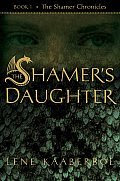 Strictly speaking, it wasn't really Cilla's fault that I was bitten by a dragon. It was probably sheer coincidence that she decided to throw a bucket of whey in my face on the very day the man from Dunark came. But every time my arm hurts...every time I miss Cherry Tree Cottage and the pear trees and the chickens we had...I get mad at Cilla all over again.
Strictly speaking, it wasn't really Cilla's fault that I was bitten by a dragon. It was probably sheer coincidence that she decided to throw a bucket of whey in my face on the very day the man from Dunark came. But every time my arm hurts...every time I miss Cherry Tree Cottage and the pear trees and the chickens we had...I get mad at Cilla all over again.
Overview:
Ten-year-old Dina Tonerre has very special eyes, but no one wants to meet them. Even her own friends gradually stop looking directly at her, and don't play with her anymore. She inherited those eyes from her mother, The Shamer. A Shamer is a person with the gift of reading a person's soul, of being able to see everything a person is ashamed of. But as Dina soon learns, it is a gift that is both blessing and curse, and she's not at all sure she wants it.
Her mother is sentenced to be fed to the dragons because she won't condemn a boy accused of murder - a crime that, after looking into his eyes, she is adamant that he did not commit. Dina is tricked into joining her mother at the castle where she is being held, by the very man who has decided her mother's fate. But when she meets the accused boy, she sees what her mother did - that he is innocent.
With the help of unlikely allies, Dina embarks on a perilous journey to discover the true killer, and to save her mother and the boy. Along the way, she learns about trust and friendship, and finds the courage to accept who she is.
For Teachers and Librarians:
The Shamer's Daughter is a dark fantasy with heroic proportions. There are fantastic themes here of good vs. evil, self-acceptance, trust, courage, ethics, and seeking identity. From the mystery angle, have your students keep notebooks and fill them with clues Dina discovers, as well as any other tidbits they feel are important to finding the real killer. Let them discuss the feelings Dina struggles with as she comes to grips with inheriting the Shamer's eyes. Have them chart the good things Dina discovers she can do, as well as the more unpleasant aspects of her gift.
You could also go with the political angle. Who stands to gain from the murders committed? Why? Or, have your students explore the friendship/trust theme: Dina misses having a true friend, and laments that her Shamer's eyes have scared them all away. What does her mother tell her about this? What do your students think she means by that? When does Dina discover the truth of her mother's words? When is she confused by them?
Go with the fantasy angle, and delve into dragons - where do they appear in history? How have they been described in literature? Are they based partly in fact? So many ways to use this book...which will you choose?
For Parents, Grandparents and Caregivers:
The Shamer's Daughter is most appropriate for your older kiddos - probably age 9 and up. It is a gripping story, part mystery, part self-discovery, part fantasy, and they won't be able to tear themselves away. (And neither will you - you should read it, too!) It offers valuable lessons in self-acceptance, trust, and courage, but it's not at all preachy. It comes across in a totally organic way, and is seamlessly woven into the plot. Be available as they read, to explain things they may not understand, and to discuss words they may not have heard before.
For the Kids:
The Shamer's Daughter has lots to like: dragons, castles, mystery, a girl with strange and powerful gift, action, adventure, and did I mention dragons? You will not be able to put this one down. And guess what? The author has written three more books in this series! Try it - and see what you think.
For Everyone Else:
Though The Shamer's Daughter is a novel for the youngish set, adults will be completely drawn into this fantasy. Full of action, adventure, political intrigue, dragons, and no small amount of soul-searching, it is a book that will grab your attention and never let go. And the great thing is, once you finish, there are three more books in the series, so you can continue the adventures just a little longer.
Wrapping Up:
The Shamer's Daughter has something for everyone, no matter what your age. So go find it, and get reading!
Title: The Shamer's Daughter
Author: Lene Kaaberbol
Pages: 235
Reading Level: Ages 9-12
Publisher and Date: Henry Holt and Co., 2004
Edition: First American Edition
Language: English
Published In: United States
Price: $16.95
ISBN-10: 0802075410
ISBN-13: 978-0805075410

By:
Aline Pereira,
on 10/8/2008
Blog:
PaperTigers
(
Login to Add to MyJacketFlap)
JacketFlap tags:
Young Adult Books,
Book Groups,
culture,
The Tiger's Bookshelf,
Book Chat,
The Tiger's Choice,
identity,
Julia Alvarez,
How the García Girls Lost Their Accents,
A Authors,
E,
Finding Miracles,
In the Time of the Butterflies,
E Title,
Add a tag

Finding Miracles
Milly Kaufman is the typical American high school girl, pretty, popular, part of a happy family in a small town. So why, when asked to write two truthful details about herself, does she say, “I have this allergy where my hands get red and itchy when my real self’s trying to tell me something,” “My parents have a box in their bedroom we’ve only opened once. I think of it as The Box,” and why does the appearance of Pablo, a new student from Latin America make her feel so uncomfortable? What is Milly’s secret–the one she has divulged only to her best friend?
Julia Alvarez, long acclaimed as an outstanding novelist for adult readers, turns her focus upon a young adult audience in Finding Miracles with the same skill that has made both In the Time of the Butterflies and How The Garcia Girls Lost Their Accents modern classics. While exploring Milly’s odyssey from the security of the family and community that she knows and loves to the unknown territory of a whole new world, Julia Alvarez creates a character and a novel that extends beyond age categories into the realm of fiction unlimited, while sensitively examining issues of identity and culture.
Please join us this month as we read and discuss Finding Miracles.
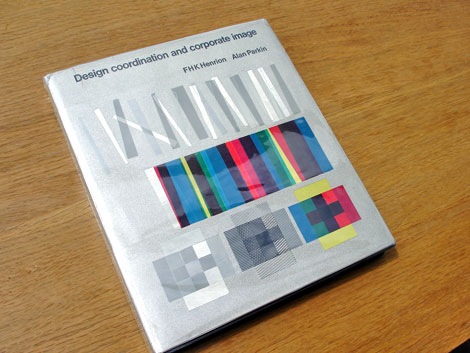
Design Coordination and corporate image - FHK Henrion + Alan Parkin c1967
This is an excellent book on the subject of corporate identity. All the big design guns are in here. The best part, for each case study the designer explains the problems he encountered and his thoughts behind the design etc.
Includes case studies by Dick Merricks, Metra International, KLM Royal Dutch Airlines, Barilla, BTR Industries, Watneys, Braun, IBM, Westinghouse, PAM, Olivetti, Celanese Corporation, Olympic Games Tokyo 1964, Clydesdale Bank, Mazetti, Pirelli, London Transport, Therma, Italsider, British Rail, Rohm and Haas, Herman Miller, Anker Bier, Lunch Bier, British Traffic Signs, Sainsburys, Steendrukkerij de Jong
Designers Include: Otl Aicher, Saul Bass, Lester Beall, Erberto Carboni, Eugenio Carmi, Wim Crouwel, Design Research Unit, Crosby, Fletcher, Forbes, Charles Eames, Olle Eksell, FHK Henrion, Yusaku Kamekura, George Nelson, Paul Rand, Willelm Sandberg, Giovanni Pintori and more.
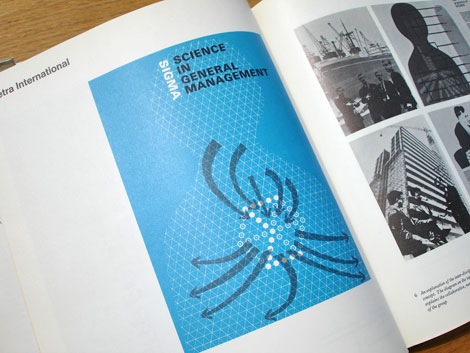


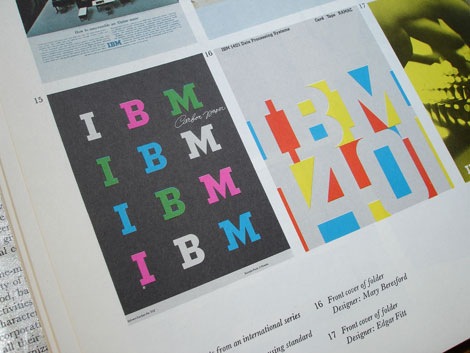



Also worth checking:
List of Corporate Identity Projects
No Tags
Share This
Congrats to JAN D you won the Raymond Savignac poster. Please email us to claim your prize. ©2008 -Visit us at Grain Edit.com for more goodies.

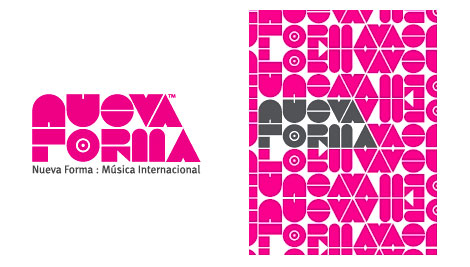
I’m digging Colorcubic’s identity work for Nueva Forma. You can check the rest of their portfolio here
contemporary,
Designers,
graphic design,
identity,
logos,
USAShare This
©2007 -Visit us at Grain Edit.com for more goodies. 

I’m digging Colorcubic’s identity work for Nueva Forma. You can check the rest of their portfolio here
contemporary,
Designers,
graphic design,
identity,
logos,
USAShare This
©2007 -Visit us at Grain Edit.com for more goodies. 
Is Junie B. Jones Talking Trash?
“People act as if I’m teaching children how to blow up cats." B. Park



















How wonderful to have that poem written for you! I do like "Zingerline" an awful lot, though -- maybe you could use it for a story character's name someday?
Heidi, your friend's poem has got me smiling and smiling! I love your post about names, and renaming, and reinventing ourselves -- for social media or wherever. I hope you'll find a place in your writerly identity for the magical Zingerline yet.
I love Lawrence's poem. But I can also see how Zingerline would be irresistible. If it's any comfort, people misspell "Orange," too. I particularly dislike when it comes out "Drange." Sounds too much like drudge. Or deranged.